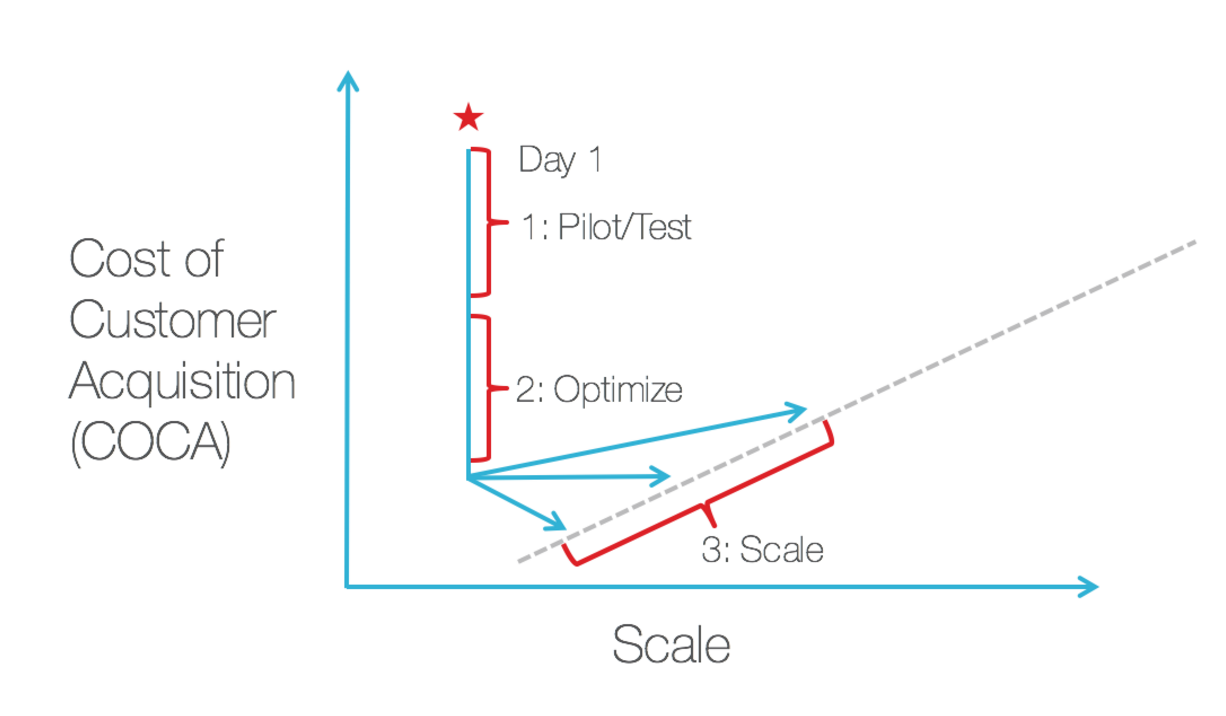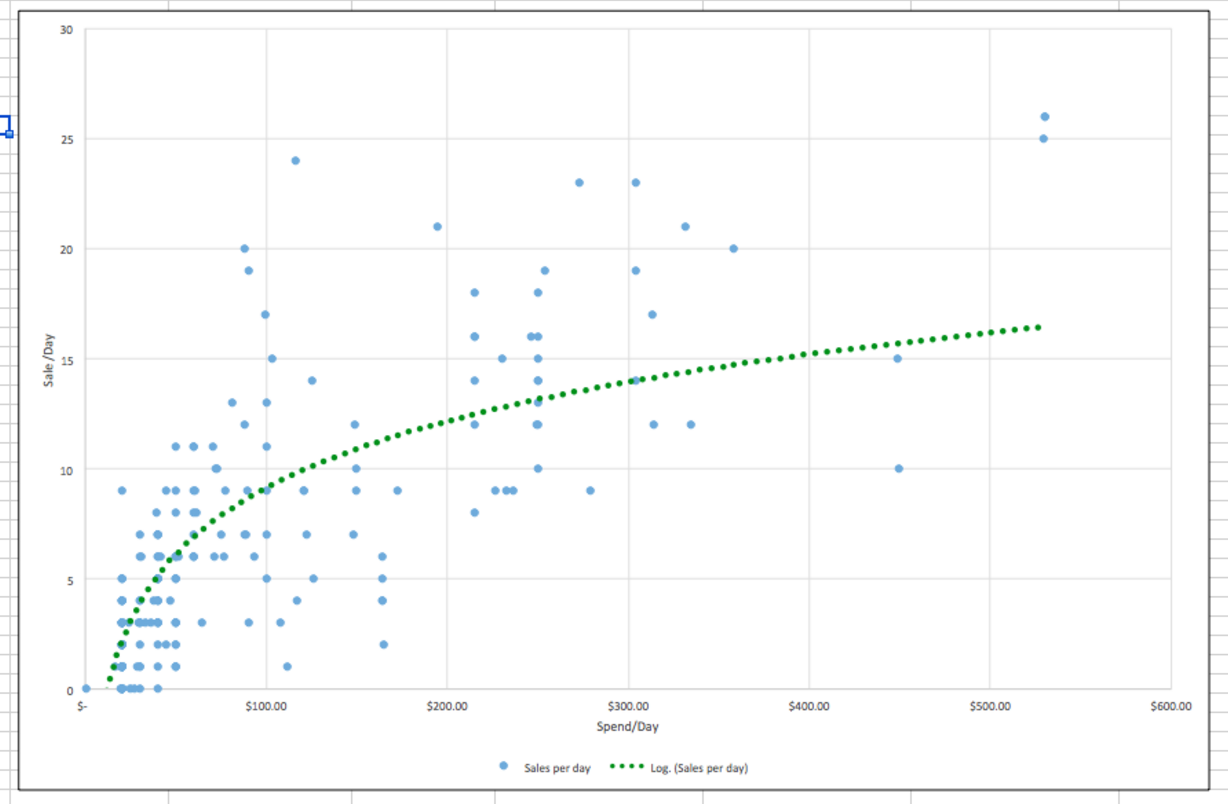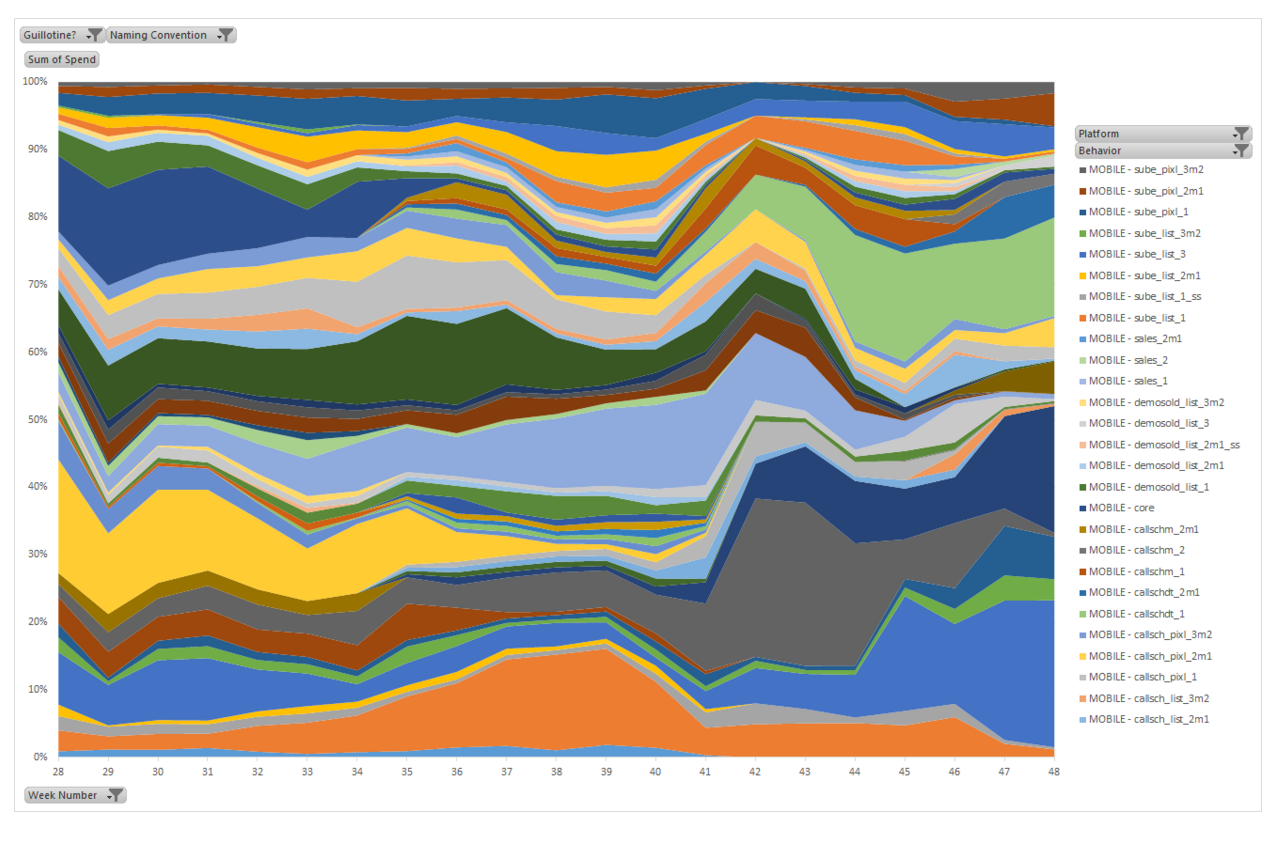Many businesses become obsessed with obtaining the lowest COCA (Cost of Customer Acquisition), but depending on your goals, that may not be your optimal COCA. With all factors of a paid advertising campaign remaining constant, costs typically increase as you spend more within a fixed audience because, put bluntly, you run out of people. We call this “audience saturation.”
With a new product or service, you do not know what that saturation point is because it is determined by several factors, including:
1. Market size (how many people in the world want to buy your widget)
2. Number of channels
3. Audience sizes within channels
4. Number of audiences within channels
How much budget you spend within each audience, and within each channel, and how fast you adjust that budget as costs change
Looking at these underlying factors, we realize that saturation depends largely on audience size. But that is easier said than done, especially when you are running campaigns across several channels and audiences. So how do you progress in a situation marked by ambiguity and constant change?
There is a tradeoff between cost and volume. For our clients, we first examine viability at a given volume to see how far below target CPA we can get. The next step is to keep CPA as low as possible as you raise volume, though CPA will unquestionably rise to some degree over time.
For simplicity’s sake, let’s translate theory into practice and posit that you are showing ads to an audience of 40,000 people. Assuming that cost-per-thousand impressions (CPM) is $10, spending $100 on day 1 gets you 10,000 impressions, so 25 percent of your total audience has now seen your ad. Spending $150 on day 2 gets you an additional 15,000 impressions, so now you have shown that same ad to 25,000 out of 40,000 people. When you spend $200 on day 3, you show that ad to another 20,000 people, bringing your total to 45,000 people. So if you spend $500 on day 4, you are buying 50,000 additional impressions, bringing your total to 90,000 impressions for an audience of only 40,000 people.
To really drive this point home, consider this example from the offline world: billboard advertising. When a billboard first goes up, you reach your target audience when they see the billboard for the first time. Depending on the area where the billboard is located, the number of people seeing it may be large or small. As time passes and the billboard remains unchanged in both appearance and location, people who have already made the decision whether or not to become a customer see the same ad over and over again. Continuing to pay for the billboard will not necessarily mean an increase in customers. Since the entire audience has been exhausted, no new people are being exposed to the billboard’s message. The same is true for digital acquisition.
Here is what it looks like:
Remember, on Facebook, an audience of 40,000 people is roughly the same 40,000 people day after day after day, begging the question: How do you deal with audience saturation?
1. Spend less (more accurately, spend optimally)
2. Find more/bigger audiences
Those are not your only options, however. Depending on your business, you could also highlight different products or services in the existing audience, or run new creative (images and copy). But continuously refreshing top-of-the-funnel components will only get you so far.
This is where the “Portfolio Theory of Audiences” comes in. This theory argues that managing audiences in the aggregate is more efficient than trying to manage audiences as separate units. Thus, budget allocation looks similar to how a financial manager might allocate a financial portfolio. There is no such thing as a “good” investment class; there is simply a tradeoff of risk and return.
Similarly in advertising, there is no such thing as a good audience or a bad audience, there is simply a tradeoff of volume and return. The more diversified your audience bidding strategy, the more opportunities you will be able to capitalize on, and the lower your risk and volatility will be. Think about it: if a competitor starts bidding aggressively against one of your audiences, and you only have a few audiences running, that one competitor can crush your economics. However, if you have a portfolio of audiences, you simply shift budget and move on, and it becomes a non-issue.
Below is an example of budget allocation in action. Each color represents a distinct audience. The height of each color indicates how much of the total budget it is receiving. You can see the budget start out evenly across audiences, and change over time.
A few things to note:
1.Some audiences are powerful, and then die, and then come back again.
2. If we had been running fewer audiences, each audience would have had to shoulder much more budget. Since we were able to allocate (i.e. “diversify”) across many audiences, we could always be bidding at the most efficient amount.
And here is a more extreme example:
All in all, there is no simple explanation, at least not when you are aggressively pursuing scale and attempting to remain cost-effective. With the proper combination of audiences and budget, your campaigns come that much closer to optimization nirvana.
The Young Entrepreneur Council (YEC) is an invite-only organization comprised of the world’s most promising young entrepreneurs. In partnership with Citi, YEC recently launched BusinessCollective, a free virtual mentorship program that helps millions of entrepreneurs start and grow businesses.







